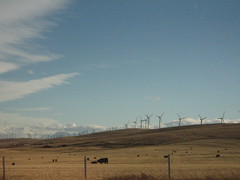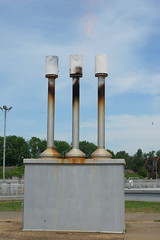Forest Lawn, Neverland Ranch, and cremation are all possibilities
Michael Jackson's glimmering casket took center stage at the Staples Center as celebrities memorialized the King of Pop under the watchful eyes of millions. And when the ceremony was over, it was gone.
LOS ANGELES - Michael Jackson's glimmering casket took center stage at the Staples Center, sitting for more than two hours as celebrities memorialized the King of Pop under the watchful eyes of millions. And when the ceremony was over, it was gone.
By law, the golden casket that presumably held Jackson's body should be exactly where his death certificate says it is: back at Forest Lawn Memorial Park Hollywood Hills cemetery, the site of a private family memorial service held before the Staples ceremony. Los Angeles County records show the cemetery as the temporary location, where it must stay until those records are officially updated.
But where Jackson's body will eventually be laid to rest remained a mystery, fed by the same level of rumor and speculation that surrounded much of his life. Will he be interred at Forest Lawn? Is Neverland Ranch still a possibility?
What if he's not buried at all, but cremated? The family isn't talking — and may not even have decided yet.
The casket was first seen leaving the mortuary at Forest Lawn, where it got into a hearse for the 10-mile trip to the Staples Center. But before the service even started, the hearse was seen leaving the facility — empty — and wasn't spotted again.
But to keep in good standing with the law, the casket would have needed to return to Forest Lawn at some point, presumably after the crowds went home and the television cameras were long gone.
Robert J. Biggins, a former president of the National Funeral Directors Association, said Jackson's body is likely in his casket which he identified it as a custom-made, top-of-the-line coffin made by the Indiana-based Batesville Casket Company that is called a "Promethean." The casket is probably in a temporary holding area — perhaps a mausoleum — pending a final location, he said.
"This happened so quickly that it's something that has to have an awful lot of thoughtful consideration," said Biggins, who is the owner of Magoun-Biggins Funeral home in Rockland, Mass. "This is bigger than your average burial."
Family appears dividedConjecture about Jackson's final resting place has been as fraught as the rumors about where his memorial service would be held in the days before the Staples Center was announced. His 5-page will, signed in 2002, does not include final wishes for his body.
Forest Lawn is one likely possibility. If Jackson is buried there, he would join other celebrities such as Liberace, Gene Autry, Bette Davis and Andy Gibb. Recently deceased actor David Carradine and "Tonight Show" sidekick Ed McMahon also are buried there.
The Jackson family seems divided over whether the body should go to Neverland, which would surely turn the Santa Barbara County ranch into a West-coast Graceland. But Jackson abandoned the 2,500-acre estate after going into seclusion following his acquittal on child molestation charges in 2005, and many of the things that made it unique — the merry-go-round, Ferris wheel and zoo — are gone.
getCSS("3053751")
Slideshow
Saying goodbye to the ‘King of Pop’The family holds a private service, and fans and celebrity friends say farewell to the pop star at a public memorial service at Staples Center in Los Angeles.
more photosBillionaire Thomas Barrack, who owns Neverland in a joint venture with Jackson, has expressed an openness to the idea of having the singer's body buried at the ranch. The family would need to get permission from local land-use officials to bury Jackson on private property, then submit an application and paperwork with the state Cemetery and Funeral Bureau.
The state application would then need to be approved by the funeral board, a process that could take anywhere from seven to 30 days.
Beyond that, accessibility remains an issue at Neverland. A single two-lane highway leads to the property about 130 miles north of Los Angeles, and infrastructure changes would likely be necessary to accommodate the additional traffic.
Another possibility is cremation. State law requires that the person who has control of the cremated remains obtain written permission of the property owner or governing agency to scatter on the property.
Delay allows burial to be ‘done right’Funeral experts said the delay in Jackson's funeral may be due to the fact that such celebrity deaths create logistical, security and legal headaches.
"One of the issues you're going to run into with any high-profile name, whether it be a former president of the United States or somebody of Michael Jackson's stature, is what does the cemetery — if it's to be a burial — do to establish security, to protect the remains, to protect the privacy of the family during the service, to protect remains afterward and what kind of built-in overhead comes with it," said Paul Elvig, former president of the International Cemetery, Cremation and Funeral Association.
Experts said even a two-week delay between death and funeral is not unusual. The body of singer James Brown was kept in a sealed gold casket inside his South Carolina home for more than two months before being interred in 2007 at the home of one of his daughters.
"You're probably talking more about an impatient public and an impatient press wanting to know what's going to happen and that impatience needs to be understood," Elvig said. "If a body's been properly prepared by an embalmer, it can be held for a considerable period of time with minor touchups to it."
Biggins said he is even encouraged by the delay.
"I think the fact that there's this pause is a wonderful thing because it's being given thoughtful consideration," he said, "to make sure this is done right and this is done in a way that honors his legacy."
 Indian Air Force advanced light helicopters "Sarang" perform as India's national flag flutters during the inauguration ceremony of the "Aero India 2009" at Yelahanka air force station near Bangalore February 11, 2009. India launched on Sunday its first nuclear-powered submarine capable of firing ballistic missiles.
Indian Air Force advanced light helicopters "Sarang" perform as India's national flag flutters during the inauguration ceremony of the "Aero India 2009" at Yelahanka air force station near Bangalore February 11, 2009. India launched on Sunday its first nuclear-powered submarine capable of firing ballistic missiles. 

 Public transport, public transportation, public transit or mass transit comprises all transport systems in which the passengers do not travel in their own vehicles. While it is generally taken to include rail and bus services, wider definitions would include scheduled airline services, ferries, taxicab services etc. any system that transports members of the general public. A further restriction that is sometimes applied is that it should take place in shared vehicles, which would exclude taxis that are not shared-ride taxis.
Public transport, public transportation, public transit or mass transit comprises all transport systems in which the passengers do not travel in their own vehicles. While it is generally taken to include rail and bus services, wider definitions would include scheduled airline services, ferries, taxicab services etc. any system that transports members of the general public. A further restriction that is sometimes applied is that it should take place in shared vehicles, which would exclude taxis that are not shared-ride taxis.


 #>Tune up and maintain vehicles properly
#>Tune up and maintain vehicles properly
 #> Reduce electricity usage to the maximum
#> Reduce electricity usage to the maximum Preferring reusable products instead of disposables will help in reducing the waste. When you buy a product, make sure that the packing is quite reasonable one. In other words, packing should not exceed the size of the product. Always try to recycle household waste. By recycling the household waste, one can save 2,400 pounds of carbon dioxide annually.Here both the entrepreneurs and public should join hands together for a cause. Always try to educate others on preferring recycling products.
Preferring reusable products instead of disposables will help in reducing the waste. When you buy a product, make sure that the packing is quite reasonable one. In other words, packing should not exceed the size of the product. Always try to recycle household waste. By recycling the household waste, one can save 2,400 pounds of carbon dioxide annually.Here both the entrepreneurs and public should join hands together for a cause. Always try to educate others on preferring recycling products.


